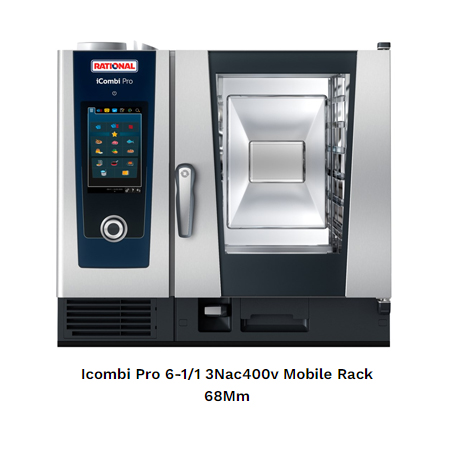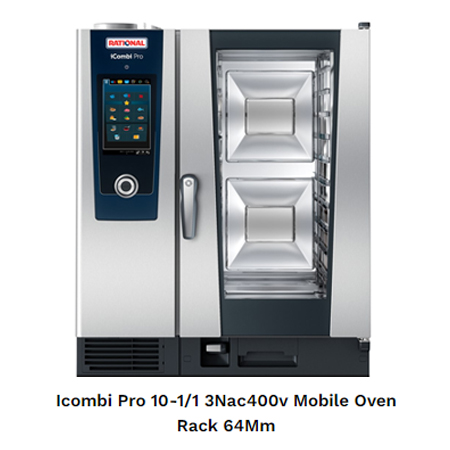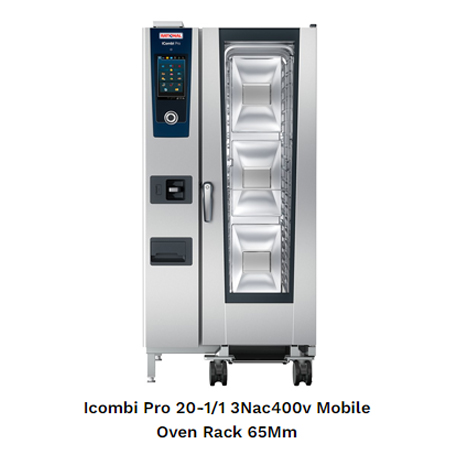Combi ovens are staple equipment in many hotels, busy restaurants, and commercial kitchens. They have evolved technologically over time and when used correctly they can save busy food outlets on electricity usage, food wastage, and staff productivity. We discuss everything you need to know in this article to help you decipher which is the best equipment for your business.
What is a Combi Oven?
Combination ovens, also known as combi ovens, provide three cooking options in one appliance. These cooking methods are convection, steam, and a combination of the two. The bonus of this is users can control not only the cooking temperature but the humidity too. This gives the user the power to control the way food cooks, a huge bonus in busy kitchens.
Browse our catalogue of combination ovens
The versatility of a Combi Oven
When in convection mode, the oven circulates dry heat much like a traditional roasting oven. This setting is ideal for pastries, bread, and other baked goods.
The steam mode in a combi oven injects steam into the oven making it ideal for poaching fish, cooking rice and vegetables.
The true genius of combi ovens is the combination mode which uses dry heat and steam to maintain precise humidity levels for the ultimate cooking experience delivering fine food at maximum capacity.
What are the advantages of Combi Ovens?
Consolidate several appliances with one
The combi ovens bake, roast, steam, fry, and so much more.
Why have lots of equipment scattered around your kitchen when you can have one simple tool that does that lot?
Accelerated cooking without drying out the food
Using the combination mode gives the user a huge amount of control when it comes to maintaining moisture levels in food while they cook. The setting enables chefs to speed up the cooking process while maintaining quality as they’re able to accelerate cooking with higher heat while introducing humidity to ensure the ingredients do not burn or dry out.
Cut down on costs with this investment
With precision cooking and the ability to cook faster than conventional ovens, a combi oven can lower energy costs due to less cooking time. If cost-cutting is an activity you are focused on, there’s the bonus of labour costs being reduced due to greater staff efficiency as the combi gets the job done efficiently and quickly.
They offer precise temperature and moisture control
Accurate controls built into the equipment enable meals to be prepared with precision due to technological advances. Greater precision provides more control to deliver consistent meals which is a win in any kitchen.
The ability to cook an array of meal types
With the various settings available on a combination oven, it becomes a jack-of-all-trades cooking powerhouse. This equipment can dry bake, steam, and so much more. It replaces the need to house different equipment types with one all-encompassing machine that can bake, steam, and cook food with precision.
Meals are cooked consistently
Most models can be programmed with your cooking preferences. Add to this the temperature control settings and you have the perfect recipe to ensure your menu items are served consistently every time. Maintaining your combi oven is key to this so be sure to read our maintenance and cleaning advice below to ensure you always serve up the best your combi can offer.
Combi ovens are easy to use
The operator functions on combi ovens vary across different models. However, the manufacturers recognise that time is of the essence when using this equipment, so they’ve developed easy-to-use menus and dials with some offering programmable options for users to set their cooking preferences.
Combi ovens are available in various sizes
There’s a combi oven available to suit all kitchen sizes and space availability. This is a common deal-breaker when deciding on a model.
We discuss the size options in more detail below.
Self-cleaning? Yes, please!
Most models host a self-cleaning function that will save your team from exerting elbow grease at the end of a busy shift. Some maintenance is still required (which we discuss below) to ensure your cooking process and the self-cleaning function is completed with little fuss.
Different sizes of Combi Ovens
The Mini models
These smaller versions get the job done in kitchens where space is limited. They are also suitable for front-of-house meal preps when required in café or coffee shop environments. They typically have no more than six shelf slots and can hold between 3- 5 pans.

The Benchtop models
These models are ideal for quick-service restaurants or food trucks with counter space available for these appliances. The units can hold 6-12 pans.

The Floor Models
Hotels and high-volume kitchens rely on these large combi ovens to prepare a lot of meals that meet quality standards. The most common models of these variants have a minimum of 20 shelves with the ability to hold 20-40 pans.

The difference between a Boiler and a Non-boiler (or Spitter) Combi Oven
A boiler, or steam generator combi oven, uses a tank of boiled water in large quantities to produce steam that is injected into the oven. However, a non-boiler (or spitter) combi injects water right onto the heating element. The non-boiler model is increasing in demand due to less water being required in the cooking process and less maintenance is required for these models.
Combi ovens with built-in boilers have more moving parts in comparison to their counterparts. While they’re susceptible to more maintenance (due to more moving parts) their advantage is their unmatched performance in getting the job done. Boiler combi ovens can quickly provide the full cabinet with steam and in the ‘steam only’ setting the dry heat element is not required. They produce steam through a separate boiler which is circulated through the oven by a fan. When dry convection heat is then introduced, the oven temperature can be raised beyond steaming temperature to cook with super-heated steam. This results in epically hot and humid conditions allowing food to be cooked at super-power speed without drying out. Steam can be reintroduced later in the cycle to maintain optimal cooking conditions.
When compared to non-boiler (or spitter) models, boiler combi ovens have increased maintenance and replacement costs. Water usage in these models is very high.
Non-boiler combi ovens are 'steam injected' models developed with the idea cold water can flow into the appliance and be sprayed onto the heating element to generate steam. There’s no reservoir or additional heating element in these models resulting in less maintenance and replacement costs. These models are not as efficient as their counterparts when cooking with steam only. They’re a match in every other cooking environment though and while they may not serve the same punch when it comes to an optimal steaming environment, they do take up less space, use less water, and cost less to purchase as well as maintain.
Maintaining a Combi Oven
Check the drain screen daily to ensure it is in place. This prevents food from building up and blocking the drain.
Wipe the door seals regularly to ensure they seal tight.
Monitor the water filter and replace it every 3-6 months. The timing of this process is dependent on the quality of water in your area.
Schedule regular services to ensure the combi oven is in optimal working order. During services, the unit’s water lines should be checked to ensure there is no mineral scaling building up due to the quality of the water used in the steaming process. The heating units, cooking chamber, and probes must also be checked for scale and cleaned thoroughly if there is any present.
Consult the manufacturer about water requirements. In some areas, a water filtration system may be necessary for the combination oven to work effectively.
Cleaning a Combi Oven
Always check the manufacturer's instructions before cleaning. The process varies from model to model and ensuring your cleaning practices are correct is vital to the effectiveness of the combi oven.
If your combi oven has a self-cleaning feature, ensure you use the recommended detergents suggested by the manufacturer.
Do not use steel wool, scourers or wire brushes to clean the combi oven as this will damage the oven and impact temperature precision during cooking.
Clean the food probe after every use to avoid the build-up of scum and bacteria.
Reward Hospitality’s expert advice about Combi Ovens
If you don’t have a combination oven, and you’re looking to invest in your first model, our team of experts is on hand to help you select the right model from our comprehensive range available on our website.
We have finance options available, and our dedicated team of equipment specialists are on hand to offer advice. You can give us a call, visit our website to send us a message, or join us in a private online chat. We’re available to help and can arrange a visit from a member of our National Equipment Team if you prefer to take advantage of our personalised consultation service.
Browse Our Combi Ovens product range